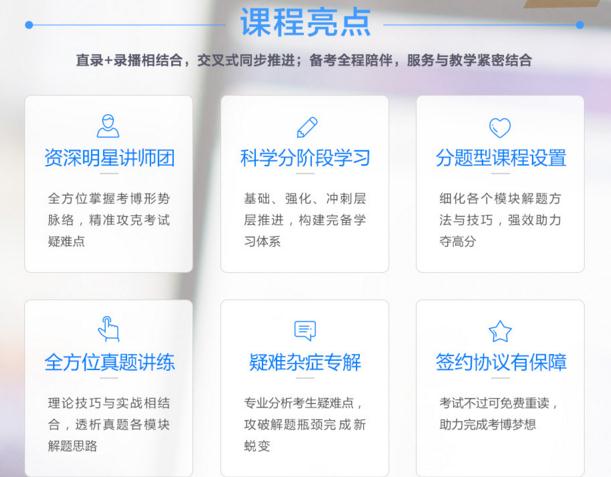2018醫學 考博英語 閱讀理解文章精析:診斷皮膚癌的更好方法
2018醫學考博英語第四部分閱讀理解,此類題目是測試考生通過閱讀英文書刊獲取信息的能力(包括閱讀速度和理解程度),下面旭晨教育考博頻道從網絡搜集整理了一系列醫學考博英語閱讀理解文章進行精析,希望對大家提高醫學考博英語閱讀能力有所幫助。
Science and technology 科學技術
Medical technology 醫學技術
Skin deep
肌膚之下
A better way to diagnose skin cancers
診斷皮膚癌的更好方法
DERMATOLOGISTS are good at spotting unusual bits of skin that might or might not be cancers. Testing whether they actually are, though, is quite literally a bloody pain. For a piece of skin to be identified as malignant or benign it must be cut out and sent to a laboratory for examination under a microscope.
皮膚病醫學家擅長發現一小塊異常皮膚是否有患癌癥的可能性。但是,要檢查出是否真患癌癥的確會讓人感到出血之痛。因為要鑒定一塊皮膚是惡性還是良性,就必須切下來,然后送到實驗室的顯微鏡下檢驗。
But a team of researchers led by Rainer Leitgeb, a physicist at the Medical University of Vienna, hope to change that. As they describe in Biomedical Optics Express, Dr Leitgeb and his colleagues are exploring a technique called optical coherence tomography, which they think will allow skin cancer to be diagnosed in situ.
但是,由維也納醫科大學物理學家 Rainer Leitgeb 帶領的研究小組希望改變這個現狀。正如他們在《生物醫學快報》上所描述的那樣,Leitgeb 博士和他的同事正在探尋光學相干斷層成像術。在他們看來,使用這種技術能在原皮膚上進行皮膚癌診斷。
OCT is a form of optical echolocation. It works by sending infra-red light into tissues and analysing what bounces back. The behaviour of the reflected rays yields information on the structures that they collided with. That, Dr Leitgeb hoped, could be used to generate a map of features just beneath the surface of the skin.
OCT 的原理是光學回聲定位,先向身體組織發射紅外線,然后再分析反射回來的紅外線。Leitgeb 博士希望,這能用來繪制顯示皮膚表面下特征的地圖。
Similar technology has been employed for nearly two decades by eye doctors and Dr Leitgeb felt that, with a bit of tinkering, it should work for skin as well. The OCT systems operated by ophthalmologists use low-power lasers which produce light with a wavelength of 850 nanometres.
相似的技術應用于眼科已有將近二十年的歷史。Leitgeb 博士認為,經過小小的改進,也能用于皮膚科。眼科醫生操作的 OCT 系統使用的是低功率激光器,能夠發出 850 納米波長的光線,這剛好超出了眼睛視桿視錐層可感光的范圍。
That is just beyond the range detectable by the rods and cones of the eye, and is thus ideal for probing that organ without discomforting the patient. Skin, however, is insufficiently transparent at this wavelength, so one thing Dr Leitgeb had to do was change it.
因此,既能夠完成眼睛檢查而又不給病人帶來不適感,用這種激光再合適不過了。但是,皮膚在這種波長下還不夠透明,因此 Leitgeb 博士所要做的就是進行改變。
Another thing which had to change was the speed at which the laser operates. In the ophthalmological system, images are built up from a series of pulses. The more of these the laser sends in, the more light returns to the device and the higher the resolution of the resulting image.
除此之外,還需要改變激光器發射的速度。眼科用的是脈沖成像的方法。激光器發射進去的激光越多,反射出來的光線也就越多,所成像的分辨率也就越高。
However, that image must be built up quickly, otherwise movement of the tissue being illuminated will blur it. For eyes, between 20,000 and 60,000 bursts a second is enough. But to photograph blood vessels inside skin Dr Leitgeb knew more would be needed.
但是,必須迅速建構圖像,否則受到照射的組織就會運動,使圖像變得模糊不清。用于眼鏡檢查的脈沖每秒 2 萬至 6 萬就足夠了。但是 Leitgeb 博士知道,要拍到隱藏在皮膚之下的血管,這個數值遠遠不夠。
In the end, he commissioned a group of researchers at Ludwig-Maximilians University in Germany to design an instrument which produces light with a wavelength of 1,300 nanometres and has the ability to fire 440,000 pulses a second.
最后,Leitgeb 博士委托德國慕尼黑大學的一個研究小組設計了能夠每秒產生1300 納米波長、44 萬脈沖的激光器。
With their new laser in hand, Dr Leitgeb and his colleagues set up an experiment that let them test the system on a range of skin conditions, including a healthy human palm, allergy-induced eczema on the forearm, inflammation of the forehead, and two previously diagnosed cases of basal-cell carcinoma.
有了新的激光器,Leitgeb 博士和他的同事就開始進行實驗,在不同狀況的皮膚上測試人的器官系統,包括無任何疾病的手掌,前臂上過敏引起的濕疹皮膚,前額上有炎癥的皮膚以及之前診斷過的兩例基底細胞癌。
They expected to see normal blood vessels in the healthy palm, increased perfusion caused by dilated and altered vessels in the eczema and the inflammation, and a chaotic jumble of vessels feeding the cancers.
他們期待看到的結果是:無疾病手掌下的血管是正常的;前臂上的濕疹和有炎癥的前額下的血管由于擴張和形變造成了灌注量的增加;而為癌細胞供血的血管亂七八糟扭成一團。
And that is exactly what they did see. Moreover, the images of the vessels supplying blood to the tumours were good enough to allow them to calculate blood-flow rates.
他們所看到的結果也正是如此。此外,供血給腫瘤的血管的圖像十分清晰,他們還能計算出血流流速。
That, Dr Leitgeb suggests, could also help treatment by allowing doctors to identify the times during their development when tumours are most vulnerable to starvation by having their blood supply cut off.
博士認為,這對治療也有幫助:醫生能通過該方式鑒定腫瘤發展中最易因切斷血液供給而餓死的階段。
點擊圖片查看課程介紹詳情及課程表
其他適合你的課程:
注意:本文歸作者所有,未經作者允許,不得轉載


